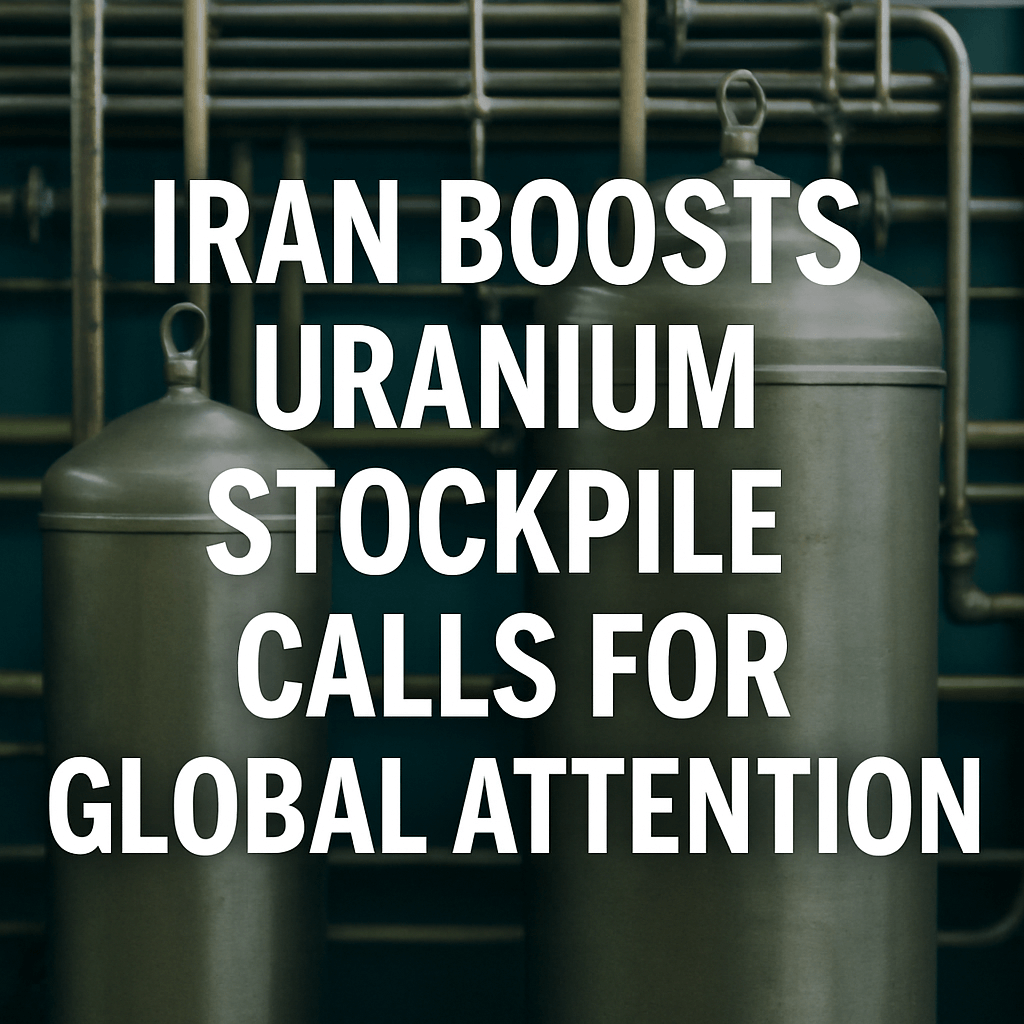Iran Boosts Uranium Stockpile, Calls for Global Attention

As per a confidential report from the Vienna-based International Atomic Energy Agency (IAEA), Iran has significantly increased its stockpile of uranium enriched to near weapons-grade levels. The report, dated May 17, reveals that Iran has amassed 408.6 kilograms (900.8 pounds) of uranium enriched to 60%, which marks a startling rise of 133.8 kilograms (294.9 pounds) since the last reporting period in February.
Technical Implications of Uranium Enrichment
The enrichment level of 60% is critically important because it is just a short technical step from the threshold of weapons-grade uranium, typically defined as 90% enrichment. The IAEA has warned that approximately 42 kilograms of uranium enriched to 90% is theoretically sufficient to create a single atomic bomb.
- As of May 17, Iran’s total stockpile of enriched uranium — which includes lower-level enrichment — stands at 9,247.6 kilograms (20,387.4 pounds), an increase of 953.2 kilograms (2,101.4 pounds) since the previous report in February.
- The enriched uranium stockpile is alarming given that it is the only instance of a non-nuclear weapon state producing such materials, leaving the IAEA and international community concerned about nuclear proliferation.
International Reactions and Diplomatic Efforts
The context of this report is critical. It coincides with ongoing negotiations between the U.S. administration, under President Donald Trump, and Iranian officials aimed at reviving the 2015 nuclear deal. These talks, however, have so far yielded limited success, presenting another layer of urgency to the IAEA’s findings.
Omani Foreign Minister Badr al-Busaidi, who is mediating the discussions, visited Tehran recently to present a new proposal aimed at limiting Iran’s nuclear ambitions in exchange for relief from crippling U.S. sanctions. These sanctions have deeply strained Iran’s economy and affected its relations with Western nations for decades.
Iran’s Response and Domestic Statements
Iran has vehemently rejected the IAEA’s findings, with officials claiming that the report is based on unreliable sources and is heavily biased. In a joint statement, Iran’s Foreign Ministry and the Atomic Energy Organization of Iran expressed disappointment, emphasizing that the nation has a legitimate right under international law to pursue peaceful nuclear energy.
Supreme Leader Ayatollah Ali Khamenei has reiterated that weapons of mass destruction, including nuclear weapons, are not part of Iran’s defense strategy. However, the growing stockpile raises questions about Iran’s long-term intentions.
Geopolitical Consequences and The Role of the IAEA
The IAEA has continuously emphasized the importance of cooperation from Iran, particularly regarding inquiries into uranium traces discovered at undeclared sites. The agency’s reports suggest a pattern of insufficient compliance from Tehran, raising the specter of prior clandestine nuclear activity, potentially leading up to 2003.
Locations of interest include:
- Turquzabad
- Varamin
- Marivan
- Lavisan-Shian (notable for being demolished by Iran post-2003)
Western officials regard the uranium traces found at these sites as potential indicators of a covert military nuclear program, which, if confirmed, could escalate tensions further.
Next Steps and Possible Sanctions
The comprehensive report from the IAEA sets the stage for potential actions by European nations that could include re-initiating snap-back sanctions against Iran. Such measures could be triggered given Iran’s lack of satisfactory responses regarding its nuclear activities, especially as the nuclear deal’s framework approaches its existential deadline in October.
Amid this backdrop, Iranian officials have downplayed any immediate expectations of a nuclear agreement, insisting that any prospective deal must include complete sanction relief while allowing continued uranium enrichment.
In light of these developments, U.S. officials have maintained that Iran must not acquire a nuclear bomb, with ongoing diplomatic efforts reflecting a persistently tense backdrop between Iran and Western nations.
Conclusion
The IAEA’s alarming report amplifies concerns regarding Iran’s nuclear ambitions, particularly against the backdrop of its enriched uranium stockpile. The situation remains complex, with interconnected geopolitical dynamics at play, necessitating urgent and careful diplomatic engagement to prevent escalation.
Source: fortune